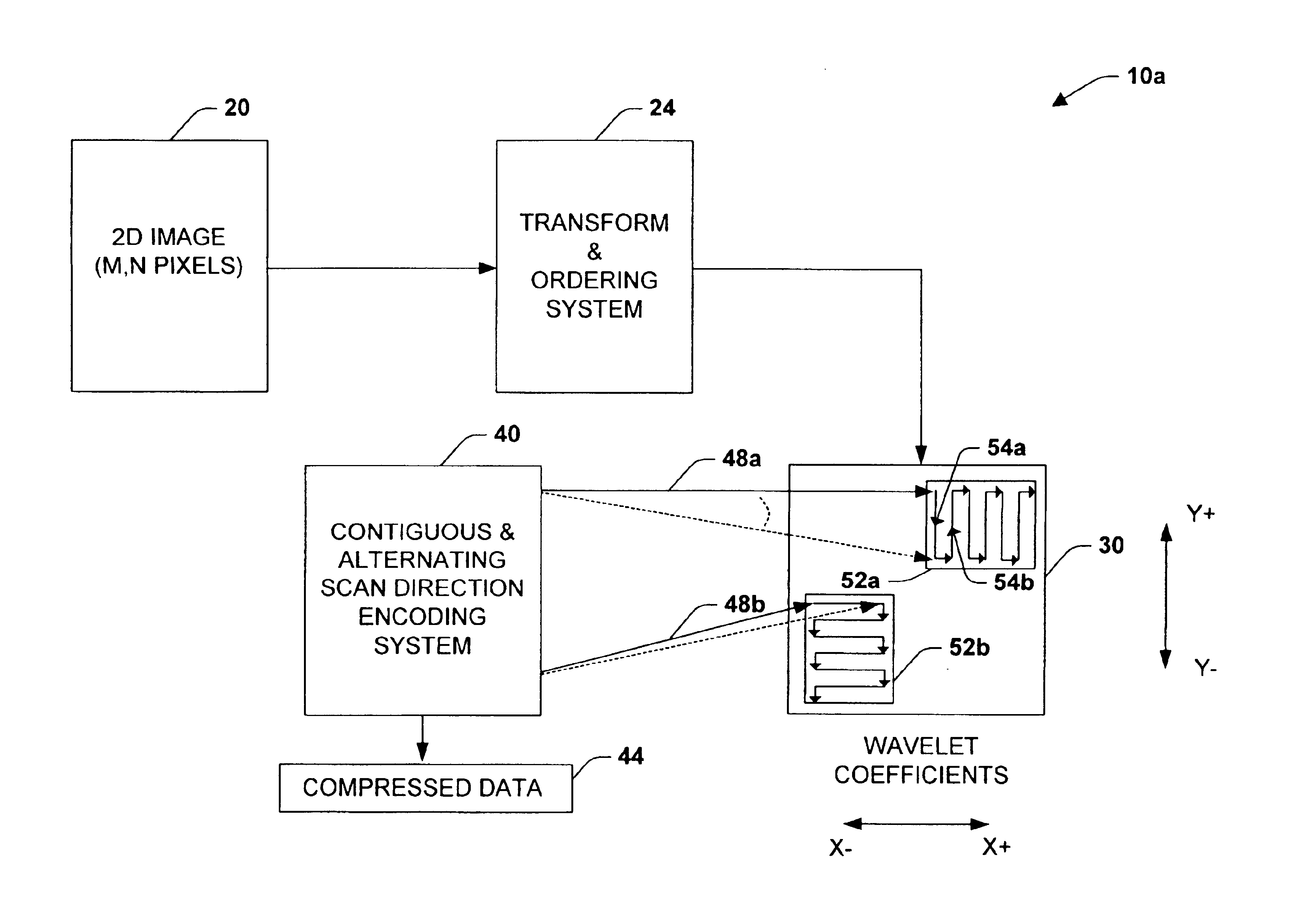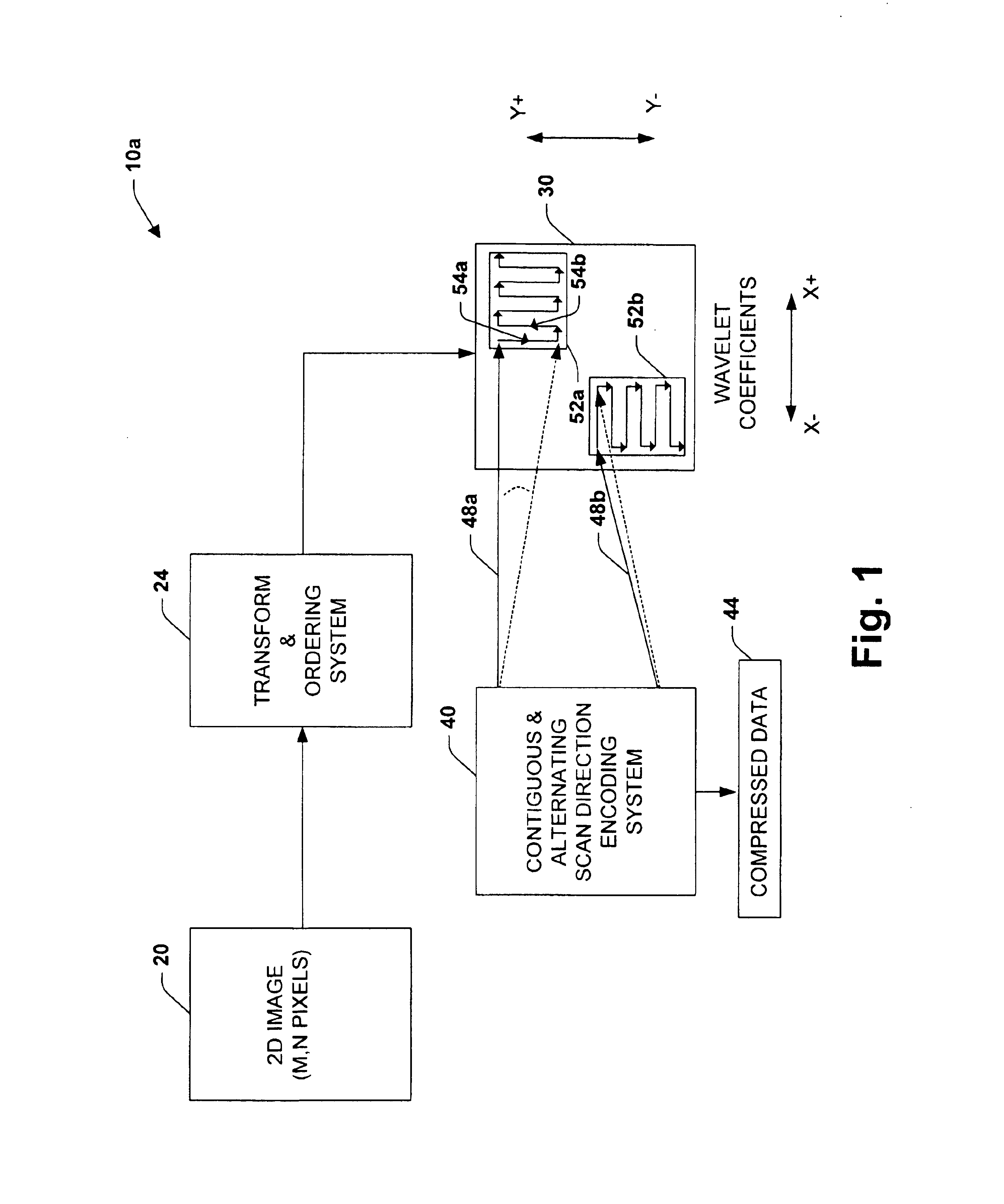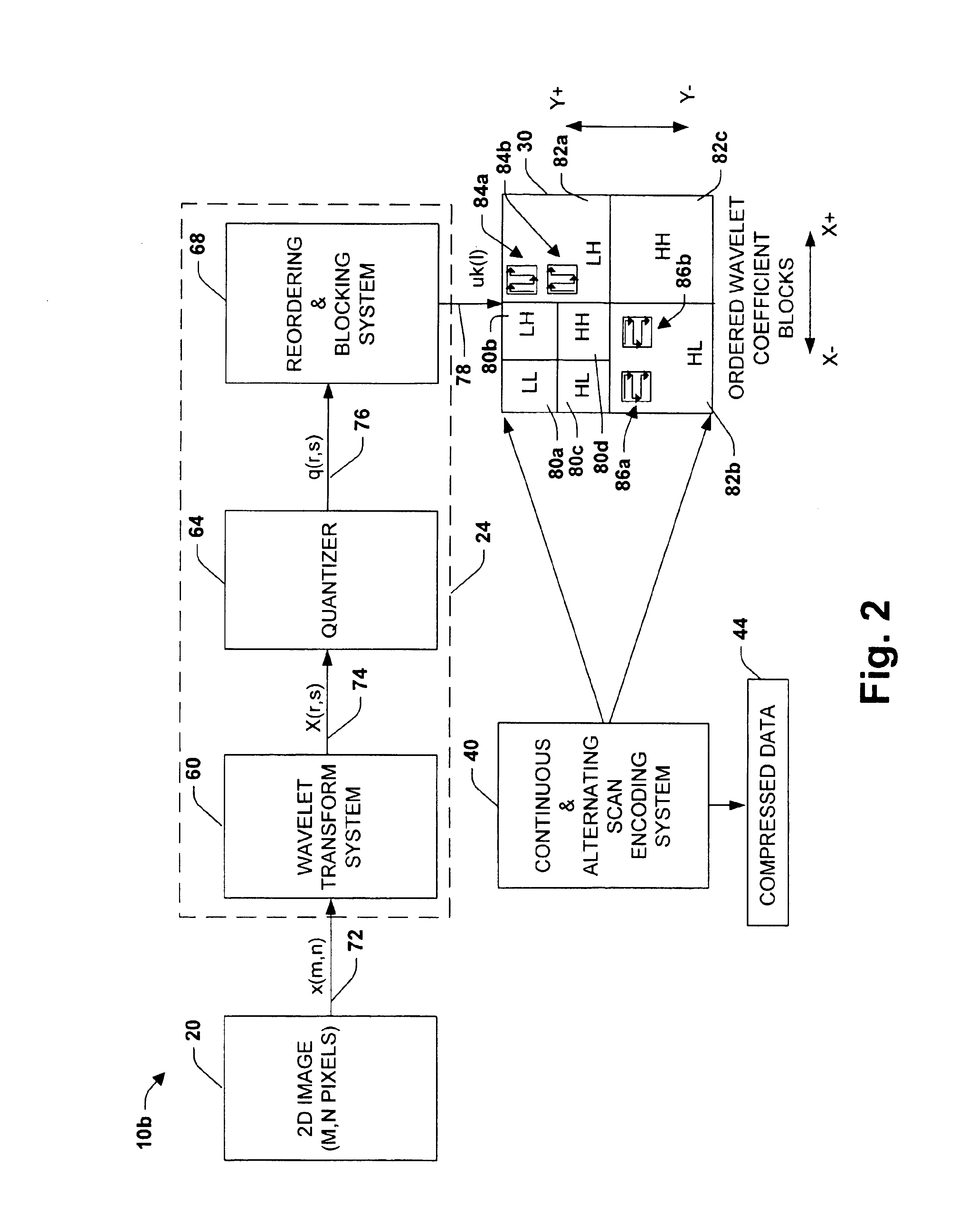System and method providing improved data compression via wavelet coefficient encoding
a wavelet coefficient and data compression technology, applied in the field of computer systems, can solve the problems of increasing user frustration in relation to delays, reducing network efficiency/speed, and transmitting large amounts of data, and achieve the effect of improving the data compression of the transformed imag
- Summary
- Abstract
- Description
- Claims
- Application Information
AI Technical Summary
Benefits of technology
Problems solved by technology
Method used
Image
Examples
Embodiment Construction
[0018]The present invention is now described with reference to the drawings, wherein like reference numerals are used to refer to like elements throughout.
[0019]The present invention relates to a system and methodology to facilitate improved image data compression in a wavelet based encoding system. In accordance with an aspect of the present invention, a two dimensional image of pixels may be linearly transformed into wavelet coefficients via a wavelet transform. The coefficients may be generated by applying a sequence of low and high pass transforms (e.g. filters) to portions of the image, for example. The wavelet coefficients are then quantized and reordered into a matrix of sub-bands associated with the low and high pass filters, wherein the sub-bands may be further subdivided into coefficient groups. The coefficient groups may then be scanned (e.g., read / input by an encoder) in accordance with a scan pattern and / or sequence of the present invention to provide improved image com...
PUM
 Login to View More
Login to View More Abstract
Description
Claims
Application Information
 Login to View More
Login to View More - R&D
- Intellectual Property
- Life Sciences
- Materials
- Tech Scout
- Unparalleled Data Quality
- Higher Quality Content
- 60% Fewer Hallucinations
Browse by: Latest US Patents, China's latest patents, Technical Efficacy Thesaurus, Application Domain, Technology Topic, Popular Technical Reports.
© 2025 PatSnap. All rights reserved.Legal|Privacy policy|Modern Slavery Act Transparency Statement|Sitemap|About US| Contact US: help@patsnap.com



